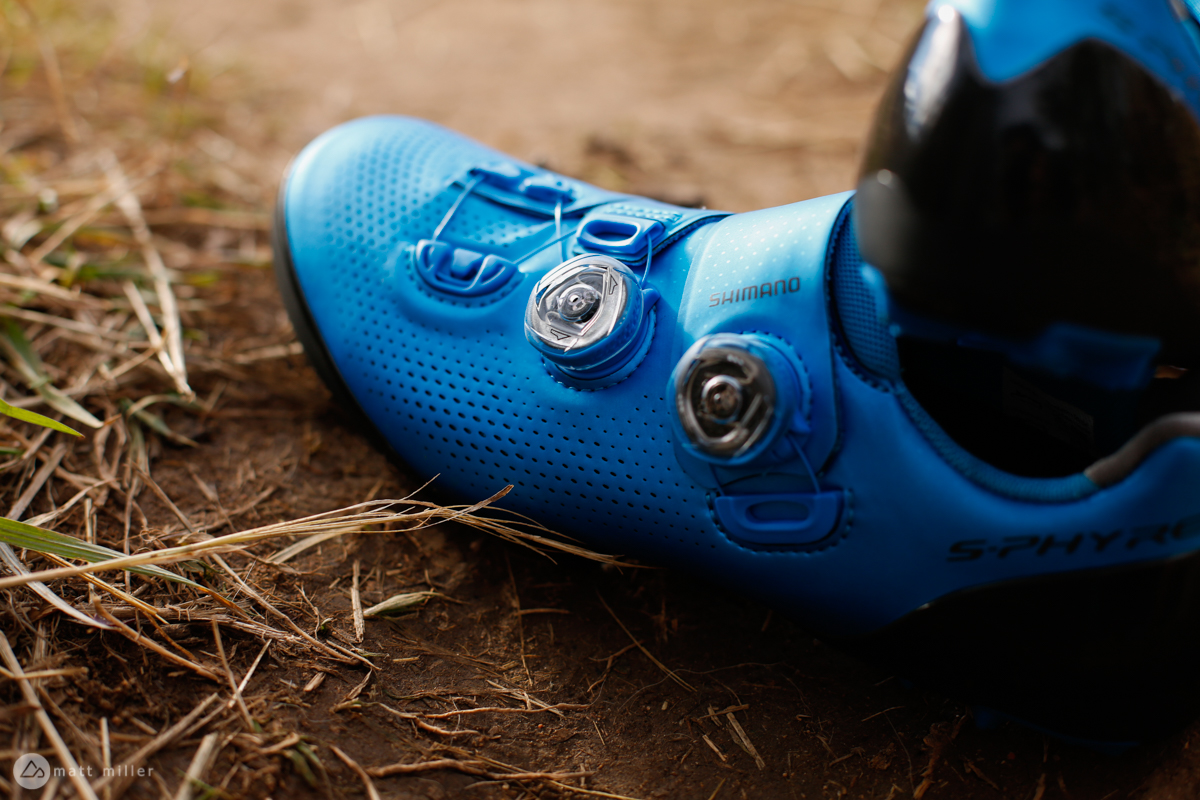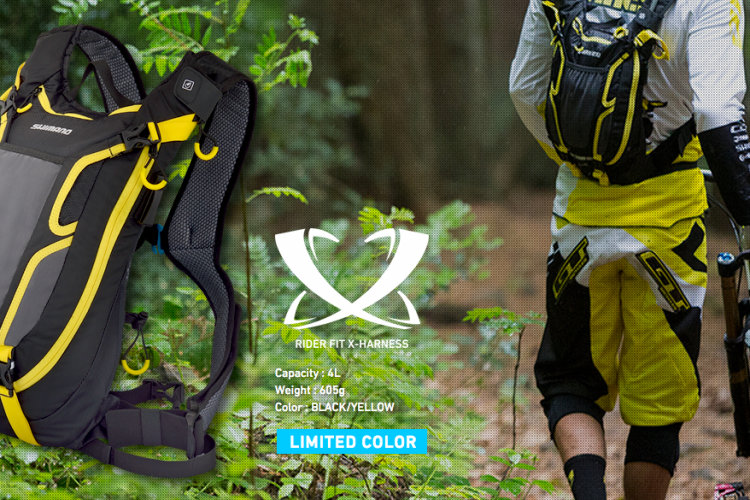
The Shimano S-Phyre XC9 mountain bike shoe has been around a long time, but for 2019, the shoe received a fresh design. There aren’t major differences between the previous and the new generation; the weight is the same, according to Shimano, the construction and materials are roughly the same, it still has a Michelin sole, and there are still two independent Boa dials.
Mostly, the new version seems to have a cleaner look. There are more, smaller vents, rather than fewer, larger vents, on the toe. The look is a bit slimmer as well. There is a little more armoring around the toes on the updated model to protect from rock strikes.
The S-Phyre shoes keep the main colorway, the classic Shimano blue, which is the color I tested. The shoe also comes in fluorescent green and black. The green or blue may not be the first choice for a lot of buyers, but I have to say the blue looks stellar in person.
The inside of the heel still features the “cat-tongue” like fabric that snags in the upward direction to prevent sock and foot movement out of the heel.

Specs
- Cross-country and cyclocross shoe
- One piece upper, rounded heel, slim toe box
- Two independent Boas
- Michelin outsole
- Carbon fiber sole
- Spike mounts for muddy conditions
- Microfiber synthetic leather
- 359g with cleat
- MSRP: $400, available at Backcountry
On the trail

As stated just above, the Shimano S-Phyre shoes look damn good. They’re sleek and the blue is easy on the eyes. The black heel cup compliments the shoes’ secondary color and the transparent Boa dials are a nice touch.
The Michelin logo on the sole adds to the S-Phyre credibility and there are some beefy tread lugs on the sole. The lugs in the mid-sole are stiff, and the lugs on the toe and heel are a bit more tacky.
The first thing I noticed about the S-Phyre shoes is the fit. It’s slim and glove-like, making the shoes easy to put on. The Boas loosen easily and provide room for the foot to slip in quickly. The individual Boas tighten around the middle and the top of the foot, and I experienced much less loosening of the Boas over a ride than I have on other Boa-equipped mountain bike shoes.
The stiff, carbon sole is of course noticeable too, and stiffer than any other mountain bike shoe I’ve worn. This doesn’t make it a great shoe to walk around in off the bike, but it’s certainly not as horrible as wearing a road bike shoe out of the saddle. There is a small bit of flex in the toe, so it’s not a completely stiff or un-walkable shoe, but the stiffness is there for maximum power transfer from leg, to foot, to pedal, to bike, to trail.
The stiffness and power transfer is just about on par with a road bike shoe and it’s quickly apparent that the carbon sole plays a big part in the pedaling efficiency of the S-Phyre. With the light weight of the Shimano shoe, it’s an extremely pedal-friendly shoe, which is why it graces the feet of many World Cup riders.
The S-Phyre shoes feel better than I expected on descents and are actually quite stable. Even on more technical sections, I never immediately thought that I needed a more sturdy shoe, or a wider toe box.
The major influence on my impressions of the Shimano shoe came from wearing them on the Mag 7 trail in Moab, Utah. Over the day the ride netted about 2,400ft of climbing, 30-miles, and still a little bit of hike-a-bike here and there. It ends up being quite a long day, but even after wearing the shoe for five-plus hours, the stiff sole never felt uncomfortable and my toes never blistered or felt raw. That’s quite a feat for a new shoe, because even after I’ve worn in the majority of my mountain bike shoes they always get uncomfortable after spending that much time in them.

The downside to wearing the S-Phyre’s that day is that they went from looking “pretty” to “pretty beat up” in a short amount of time. Granted most riders will wear them on the bike with minimal unclipping and not nearly as much hike-a-bike on sandstone. Still, I was disappointed to see them get torn up in such a short period of time.
There are quite a few tears on the blue Teijin material near the bottom where the material meets the sole. I also lost one of the low-profile resin spikes somewhere on the trail and didn’t notice until after the ride. Turns out, these are not easy to track down on the internet and the only ones I found are red, made for the previous model’s color. Shimano says that customers should not have problems getting an aftermarket set through a local Shimano dealer.
The toe and heel armor and solid construction will probably keep the shoes going for a while, but don’t count on them keeping the sexy blue or black or green material intact for long, unless you’re just racing and riding on buff tracks or soft soil. Considering the price of the S-Phyre, it’s a bummer they aren’t durable enough for everyday riding.
Conclusion

I doubt there are many mountain bike shoes out there that will match the performance of the Shimano S-Phyre XC9. They are pricey and aren’t going to look new for long under hard riding, but they are light, stiff, efficient, and somehow still very comfortable. That’s a tall order, but the S-Phyre delivers.
Thanks to Shimano for providing the S-Phyre shoes for review.





















